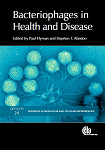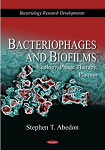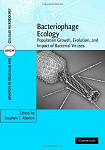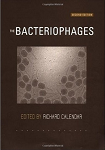





∞ generated in 2008; updated on 2023.06.03 ∞
Bacteriophages are the viruses of bacteria.
Please cite as:
Stephen T. Abedon
Review of Häusler (2006).
phage-therapy.org/writings/hausler_2006.html
| Bacteriophages are described as 'phages' for short and, less frequently, as 'bacterial viruses'. Phage therapy is the use of bacterial viruses to treat infections caused by bacteria, including those caused by bacteria that are resistant to antibiotics. |
"Just imagine a life without antibiotics", begins the forward from Thomas Häusler's, Viruses vs. Superbugs. The book then goes on to summarize the case – especially for the lay public – of one possible alternative to such a life. Indeed, a life without antibiotics need not be a life without effective antibacterial agents. Such a world has existed, as Häusler details in a lively, highly readable prose, and that is a world in which the viruses of bacteria, bacteriophages, were harnessed to treat chronic, nuisance, and even life-threatening bacterial infections. Häusler especially takes the reader on an epic journey that leads from the vestiges of the Golden Age of Microbiology through world-wide intrigue, especially to the city of Tbilisi, Georgia. Tbilisi is the capital of this former Soviet Republic, where Georgia's other claim to "fame", besides wine and hospitality, is as the birthplace of Joseph Stalin.
For some, today's world is still one without antibiotics, that is, one of resistant bacterial pathogens, biofilms, or otherwise unresponsive chronic infections. To this world of increasingly common, otherwise untreatable bacterial infections, phages represent one possible alternative therapy. Phages, however, may offer much more, providing not just antibacterial efficacy but also fewer side effects and perhaps even lower cost than standard drugs. Häusler thus provides an exciting description of one means toward addressing today's growing antibiotic crisis, one which, at least to many in the West, is novel, while at the same time standard medical practice in other parts of the world.
The story of phage therapy begins with Felix d'Hérelle, the French-Canadian co-discoverer of the bacteriophage phenomenon. In 1917 he found that these transmissible agents, so small that they passed through filters able to remove most bacteria, nevertheless were able to lyse susceptible bacterial cultures. Controversy soon ensued as to the true nature of what today we know to be the viruses of bacteria. D'Hérelle, notwithstanding this hullabaloo, was more interested in the potential of phages, as antibacterial antagonists, to cure bacterial disease. And so went much of d'Hérelle's life, seeped in a heady mixture of controversy, out-sized egos, and the pursuit of cures to bacterial infections. That is, until World War Two, during which came the first widespread availability of chemical antibiotics, the beginnings of an increasing isolation of the Soviet Union from the West, and soon after the passing away of d'Hérelle himself, which altogether sounded a death knell for phage therapy in the West.
As Häusler indicates, his "book is not a health manual whose purpose is to testify to the efficacy of phages (p. xiii), "but rather a description of the history of phage therapy, of modern phage therapy research [which, as we write today, is far more extensive than even the surprising quantity documented by Häusler], and also a description of the many colorful characters involved—one of whom drives Ferraris while others endured heatless buildings, daily blackouts, and even civil wars as they treated patients and pursued research, forming an unbroken chain of institutional knowledge reaching, quite literally, back to d'Hérelle himself. Instead, again quoting Häusler, it is more a story of "defective work" that considers the potential for transplanting a complex though easily administered technology from the mysteries of the former Soviet Union to the much more regulatory complex world of Western medicine.
Häusler's book, published in 2006, serves as an updated translation of the original 2004 German edition. It considers the advantages of phage therapy, its history, its current resurgence, and its possible future, while at the same time outlining the dangers of relying solely on antibiotics to treat bacterial infections. It also describes fascinating case studies, the most famous of which is the story of a Toronto musician who, following a bad fall while hiking in Costa Rica, was confronted with a choice between amputation of his foot or death. What followed instead was an unexpected but nevertheless agonizing third possibility, that of survival of both man and foot, but with years of chronic, crippling staphylococcal infection which, despite considerable effort, was not antibiotic curable. Finally, in desperation, he sought out phage therapy treatment, provided via a visit to Tbilisi. There, in a matter of weeks, the infection was brought under control and, with time, the wound completely healed.
Thus begins Häusler's relatively brief book (292 literally small pages). The rest documents all the reasons to believe that phage therapy represents a viable alternative to otherwise standard approaches to treating bacterial disease. Those who are sticklers for double-blind clinical trials may be greatly disappointed by the degree of progress made to date. For others, who are susceptible to inspiration by dramatic case studies – and a seemingly ongoing efficacy within a culture where phages, in fact, are a part of standard medical practice – Häusler's book provides good reason to be hopeful that d'Hérelle's cure may yet find a place next to penicillin as your physician's "newest" miracle drug.
Häusler, T. 2006. Viruses vs. Superbugs: A Solution to the Antibiotic Crisis. Macmillan, London.